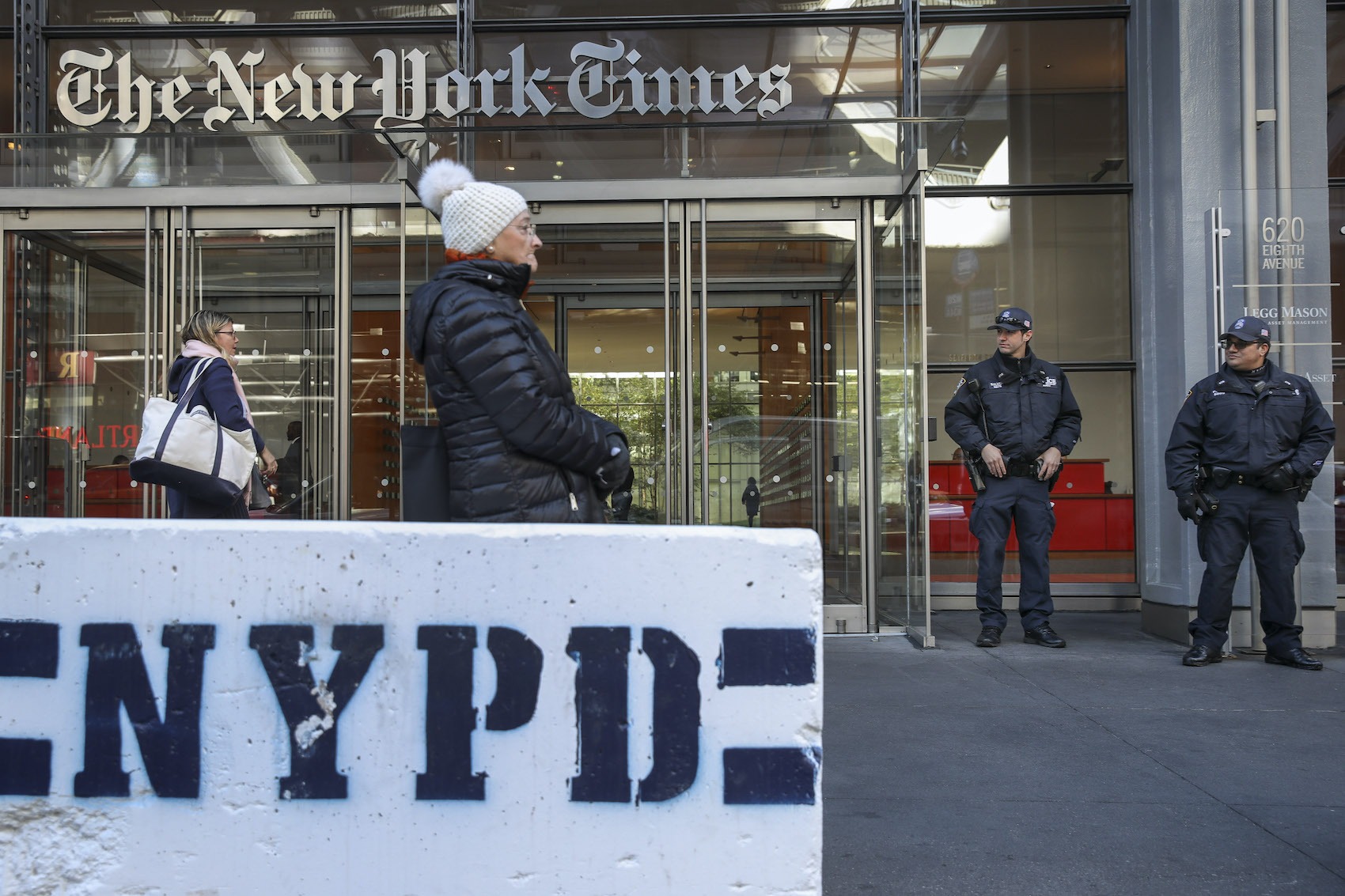A Lack Of Evidence Doesn’t Keep The New York Times From Declaring a ‘Spike In Crime’
In two articles, the Times asserts a ‘spike’ in crime since the passage of bail reform in New York, an increase that the articles themselves note they can’t prove.

The public’s perception of crime is often significantly out of alignment with the reality. This is caused, in part, by frequently sensationalist, decontextualized media coverage. Media Frame seeks to critique journalism on issues of policing and prisons, challenge the standard media formulas for crime coverage, and push media to radically rethink how they inform the public on matters of public safety.
Once again, the New York Times is publishing headlines about a “spike” in crime where none is evidenced to exist. And with Republican lawmakers pushing hard to repeal New York State’s modest bail reforms, the stakes for these missteps couldn’t be higher.
Last year in the Times, Ali Watkins painted a distorted picture about a crime trend in Brooklyn by cherry-picking data and taking cues from pro-police voices. So far this month, the Times has published two articles––one from reporters Ashley Southall and Jesse McKinley (“Spike in Crime Inflames Debate Over Bail Law in New York”) and an analysis from Azi Paybarah (“Crime Spikes. Is Bail Law to Blame?”)—that are doing something similar. The stories assert a “spike in crime” where no evidence of one exists and allow anti-reform voices to drive the narrative.
Both articles’ headlines begin with the assumption there’s been a “spike in crime” since bail reform took effect Jan. 1, but the actual narrative of the articles undermines this assertion. Indeed, even other journalists who write about crime trends know that “spikes” can not be determined based on a data set of one month. “Letting any politician use *one month* of crime data to make any political argument, much less an argument about a ‘spike in crime,’ is bullshit,” Guardian reporter Lois Beckett said on Twitter. “Anyone who has ever worked with crime data will tell you that.”
To their credit, the articles include voices that are skeptical of the idea there’s anything to be gleaned from one month of crime data. Southall and McKinley featured critical quotes from pro-reform state Assembly Speaker Carl Heastie and Nicole Triplett, of the New York Civil Liberties Union, who told the Times that the police commissioner and mayor were “manipulating statistics to fit their misguided narrative that giving low-income New Yorkers the same privileges as wealthier people is somehow linked to crime.” Southall and McKinley’s article also qualifies itself by saying in paragraph five that “law enforcement experts say crime statistics can rise or fall in any given month for numerous reasons and explain that it is far more important to track trends over longer periods of time.” Paybarah even threw in a “to be sure” line, writing, “The numbers announced yesterday, of course, were just a snapshot.”
But if the statistics are just a “snapshot,” then why assert there’s been a “crime spike”? And if credible advocates are disputing the core premise, then why is this basis simply asserted as fact? It’s true that the police have recorded a total of 8,437 serious crimes in January, compared with 7,215 in January 2019, but cherry-picking data out of 31 days does more to mislead the reader than edify them.
Indeed, the New York Times already has experience hyping a “spike” in crime that turned out to be anything but that. In early April 2019, Watkins reported a “murder spike in Brooklyn,” telling readers that “as of March 24, the borough had recorded 28 homicides so far this year, compared with 17 in the same period last year, a 64 percent increase.” The upward trend no doubt shocked thousands of Times readers. But, by August, murder in Brooklyn was actually down 12 percent year-to-date. Once 2019 was over, the total Brooklyn murder rate was up by a total of two, 100 from 98––hardly the “64 percent increase” readers were warned about in the spring.
The “crime spike” narrative comes in the context of a broader, nonstop media campaign by anti-reform forces. Each week, New York media––city and state alike––sees dozens of Willie Horton-type stories of Bad Guys “let go” who go on to commit crime. These decontextualized tales, much like the decontextualized one month of data the New York Times and other outlets are making hay over, are designed to sow fear and put pressure on Albany. Even putatively liberal politicians like New York City Mayor Bill de Blasio are fueling the narrative. De Blasio went on WNYC’s “Brian Lehrer Show” on Friday morning to play amatuer statistician, insisting that the January crime figures stand out “like a sore thumb.” But they’re only standing out because media outlets and politicians are insisting that they prove their pre-existing agenda of repealing said reforms––not due to any empirical, sober concern with crime.
Crime rates spike and dip. Criminologists know what’s useful is measuring these metrics over longer time tables. Absent that, all these articles serve to do in this era of bail reform is frighten readers into supporting a repeal of the changes––which is most likely why those in favor of overturning recent reforms are quick to jump on any movement in numbers that works in their favor.
To the extent to which “spikes” are presented by the Times, they should be framed as assertions from conflicted parties such as police or anti-reform lawmakers, not an objective fact. The articles themselves make it clear that conclusions cannot be drawn from small sample sizes so, why, one is compelled to ask, do the headlines and first paragraphs leave the public with the opposite impression?
